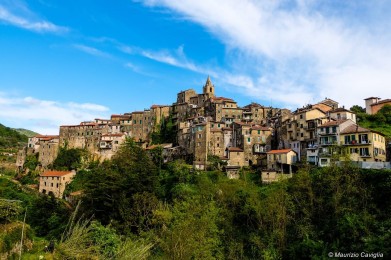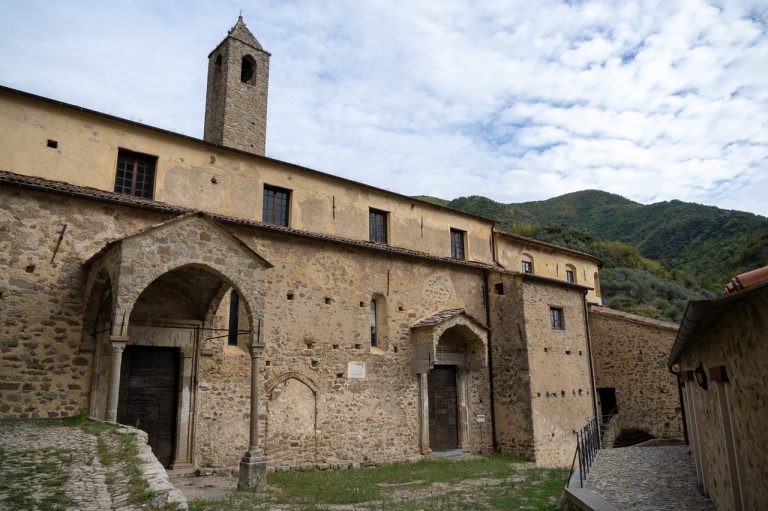The Church of Saints Peter and Paul, also erroneously known as the Church of the Holy Spirit, is a place of worship located in the village of Ceriana. This church is one of the main attractions of the village due to its architectural beauty and its thousand-year history.
The present church preserves architectural elements in the Romanesque style, which can be admired inside the building. In addition, by walking on the floor of the church, it is possible to see part of the foundation of the first ancient church that stood in this same place. This detail makes the visit even more interesting and evocative.
Next to the building of the Church of Saints Peter and Paul is the Oratory of Saint Catherine of Alexandria, another important testimony to the religious history of Ceriana. The proximity of these two sacred buildings creates a charming and spiritual atmosphere.
The architectural beauty of the Church of Saints Peter and Paul is already evident from the outside.
Some of the oldest wall pieces are those of the base of the bell tower, to which are added the foundations of the first church of St. Peter, visible in part and assignable to the 12th-13th centuries.
The building, largely the result of a large construction site between the 15th and 16th centuries, was completed in 1516, when Pope Leo X elevated it to provostry and established its canonry. In 1546 it was reconsecrated and dedicated to Saints Peter and Paul.
The entrances are side entrances, one reserved for women, rear, and the other for men, front. Inside, in the center of the nave, a wall divides the two areas, male and female. The two side portals are richly decorated and provide useful elements to understand historical passages for the building. The left entrance is protected by a small portico, is dated 1513, and features a relief image of the Agnus Dei, within a decorative sampler that also features “apotropaic” (i.e., capable of keeping evil spirits away) heads. The better-preserved right portal is located under the hanging canopy. It bears in relief the monogram of Christ and two faces, again with protective functions.
This portal is also dated 1513 and is signed by master Lazzarino Arrigo of Cenova (Rezzo valley, near Pieve di Teco). The latter is known as the author of the portal in the collegiate church of Tenda (1506) and may also have served as master builder on the site.
During the 18th century there were some significant extensions to the structure and the construction of the sacristy on the public street. This circumstance is curious, since shortly thereafter the new large church practically within the village would become available.
The interior decoration is largely entrusted to stone elements, with special attention to sandstone capitals and frescoes from the late 19th century. The recently restored large placard of the Anime Purganti was placed there.
All devotions present in the building of Saints Peter and Paul would be transferred to the new sacred site, enriched with works of art of significant antiquity. Such attention to sacred things testifies even more to the special piety of the Cerianaschi.
Currently, on the first Sunday in November, the solemn Vespers Mass of the Dead is celebrated there before the procession to the Cemetery.


